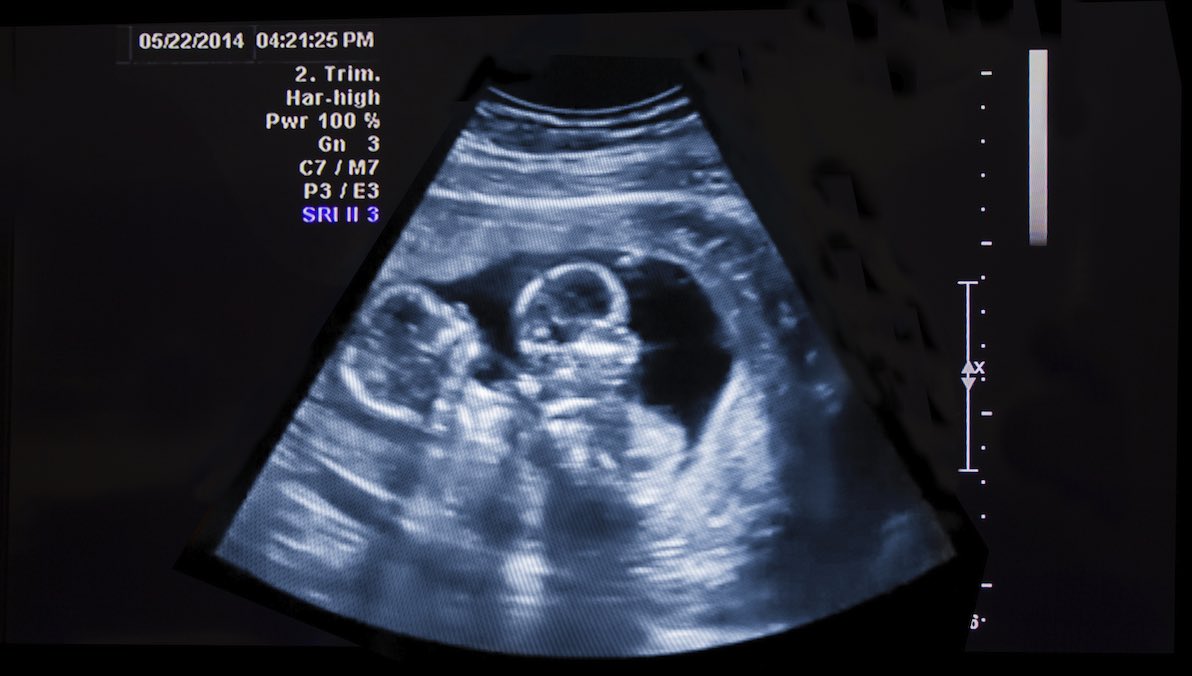An extremely rare set of twins was born to a couple in Perth, Australia. Sandra and David Searle conceived a baby while they were already pregnant, in a rare condition called “superfetation.”
The Daily Mail reported that the Searles had undergone IVF. [Editor’s Note: Live Action does not support the use of IVF. Read more about this here. However, we believe that all human beings, regardless of their means of conception, have human dignity and value, and are worthy of the right to life. This includes embryos who may die, be destroyed, or remain perpetually frozen as a result of reproductive technologies.] According to the Australian Broadcasting Corporation (ABC), David had testicular cancer years before, while Sandra was told she had a low egg count. They successfully used IVF for their previous two children, and decided to try for a third. So the couple started an IVF cycle — and got a huge surprise.
“It turns out we were actually already pregnant, but it didn’t get picked up in the early scans and blood tests,” Sandra told the West Australian. “Initially, we didn’t understand how it could possibly have happened, especially when you’re going through IVF and it’s all very scientific, facts-based kind of stuff. Very surprising. A very welcome surprise.”
Superfetation is an extremely rare condition in which a woman gets pregnant, even though she is already pregnant. Virtually all known cases of superfetation involve assistive reproductive technology (ART), according to the Cleveland Clinic. In the Searles’ case, it meant carrying a pair of twins who were at two different gestational ages.
READ: Conceiving while pregnant: Families shocked at news of triplets conceived days apart
“Firstly, I was trying to wrap my head around being pregnant with two babies with two different gestations,” she said. “So I was continuously having to explain to medical experts that I was expecting two babies … with one baby at six weeks and one baby at eight and a half weeks. And nobody could understand why. So it was just complicated from day [one]. And I was so sick, and it lasted all the way up until having the babies.”
One of her doctors explained that part of the difficulty with the Searles was determining the best time to deliver both babies.
“Between 36 and a half weeks and 39 weeks, there’s a lot of change going on in babies,” he said. “At 36-and-a-half weeks, babies are much more likely to end up in the nursery with some breathing problems needing some extra support. And generally 39 week babies come out and they’re ready to go. So trying to work out the optimal time for both and trying to work out what’s going to be best overall is always tricky.”
Ultimately, both babies came out healthy. Poppy, the older twin, was full-term, while Michael was about one month behind, developmentally. But it’s still a story the couple is happy to be telling.
“After everything we’ve been through in the last eight years, we just didn’t anticipate ever falling pregnant naturally. He’s been in remission for a few years now, so he’s doing really well,” she said of her husband. “The first time we took our daughter to see his oncologist at the time, he was over the moon because having children was up in the air a few years ago. There were a lot of people involved in ensuring we had two healthy babies who defied the odds.”








